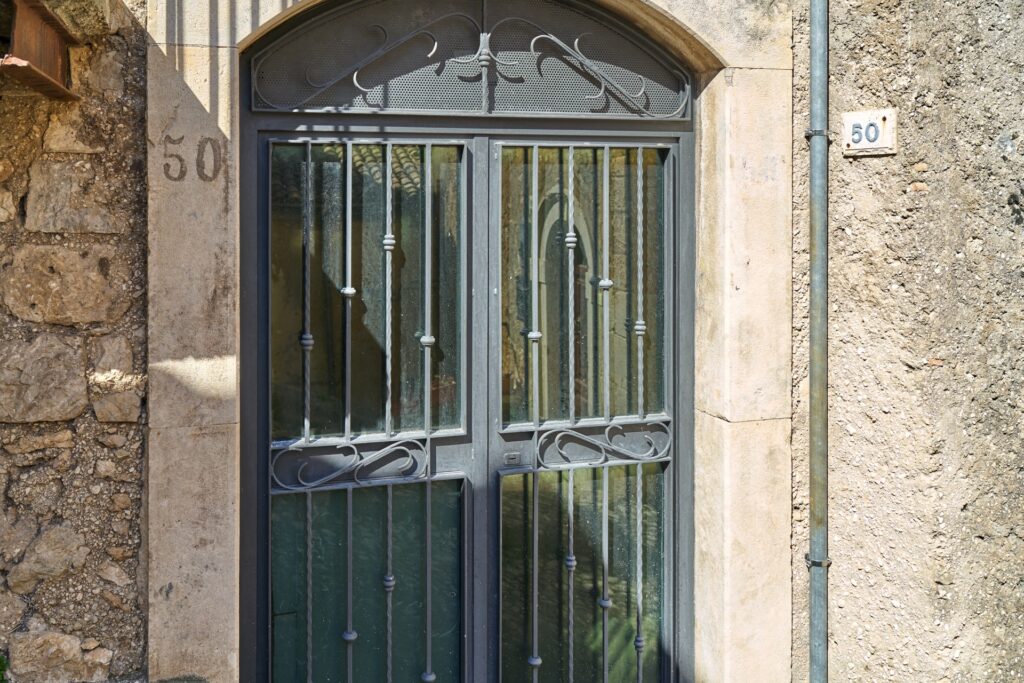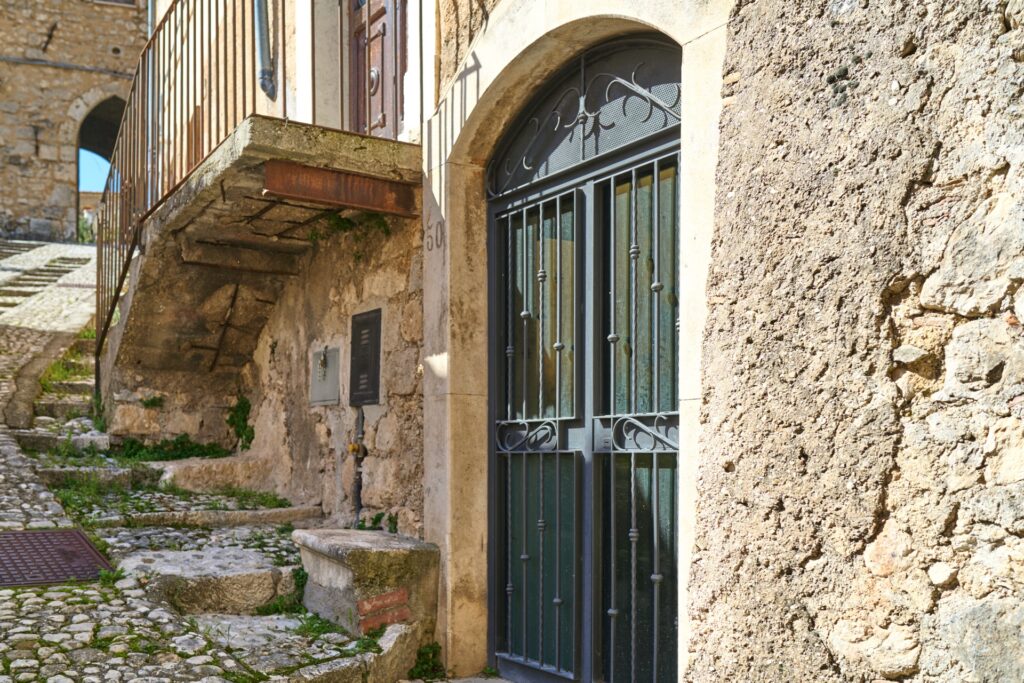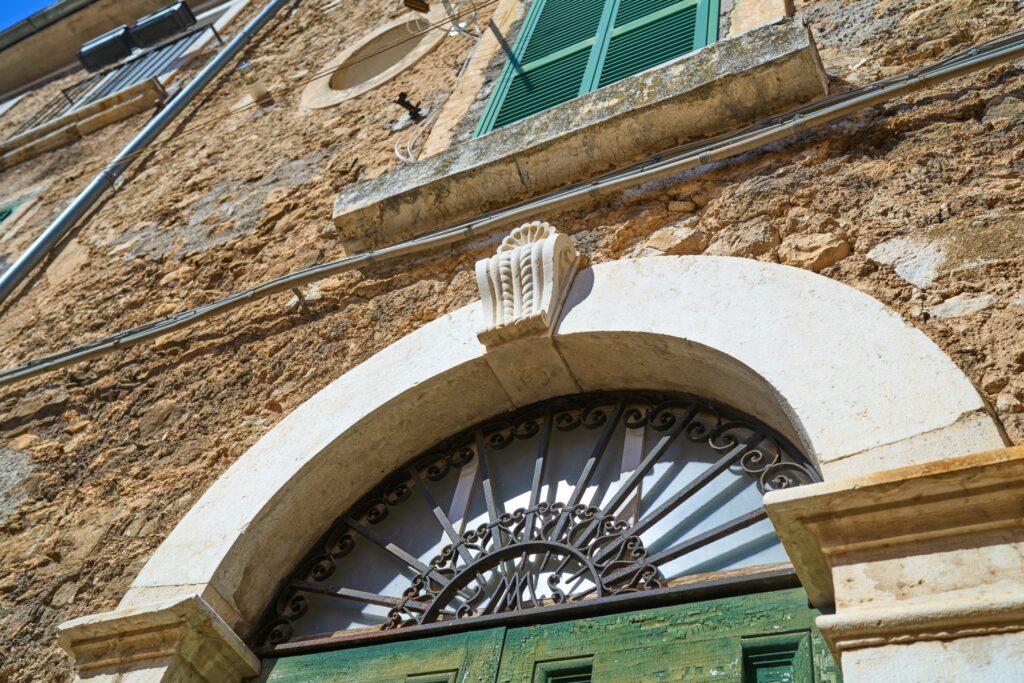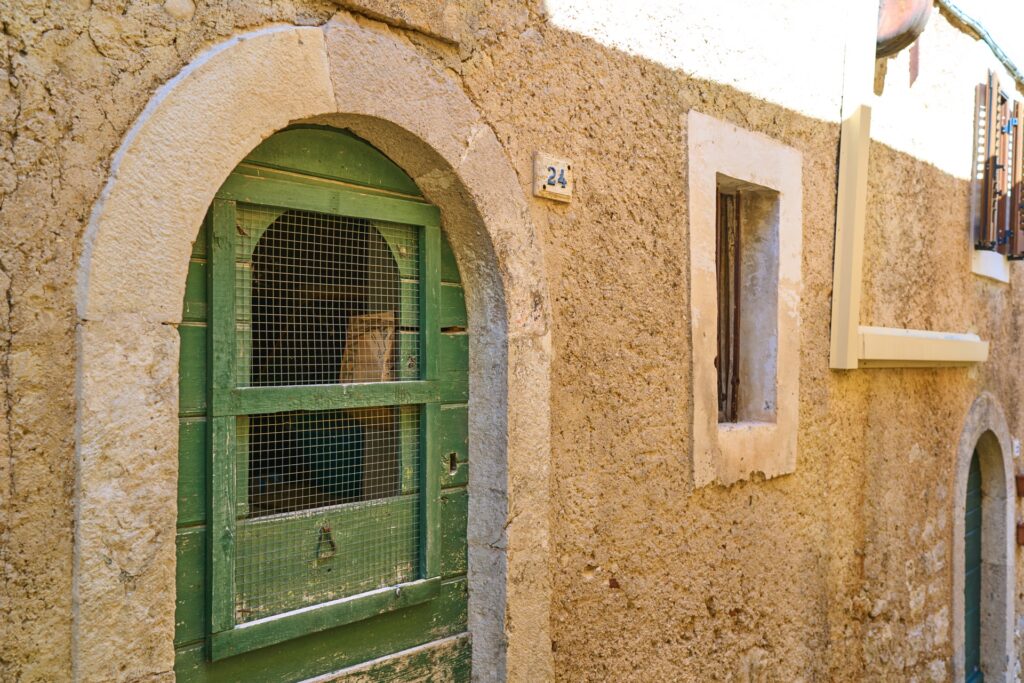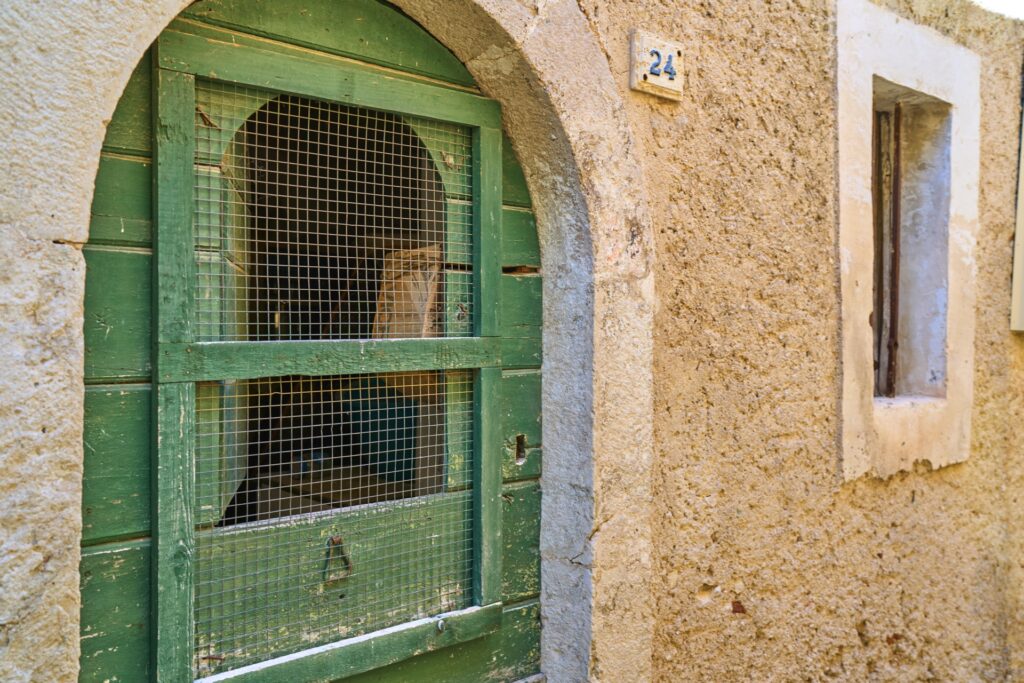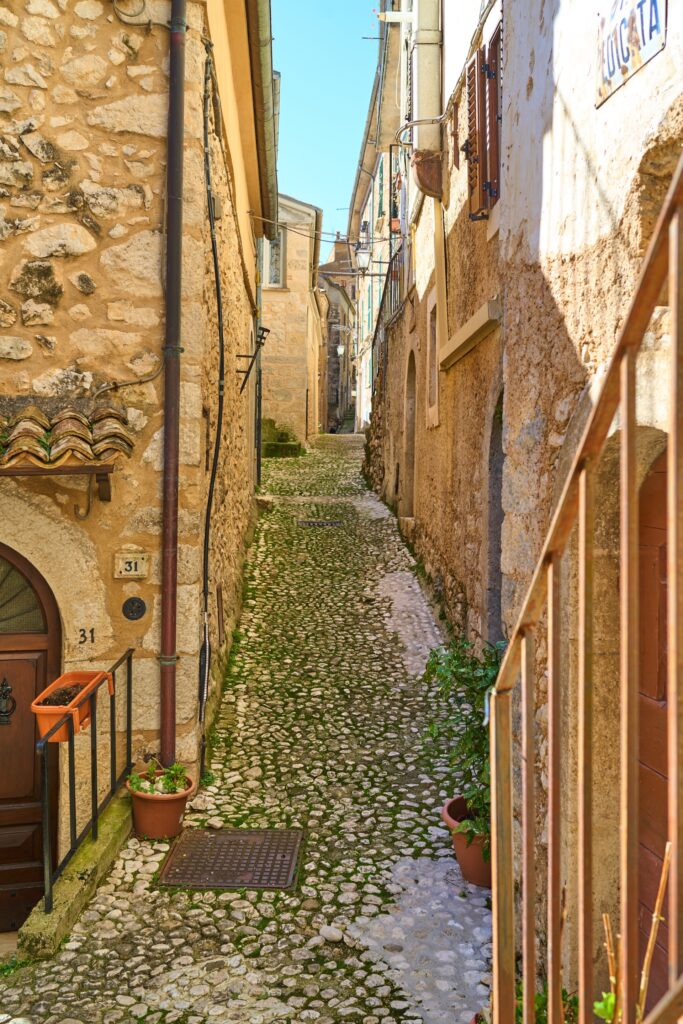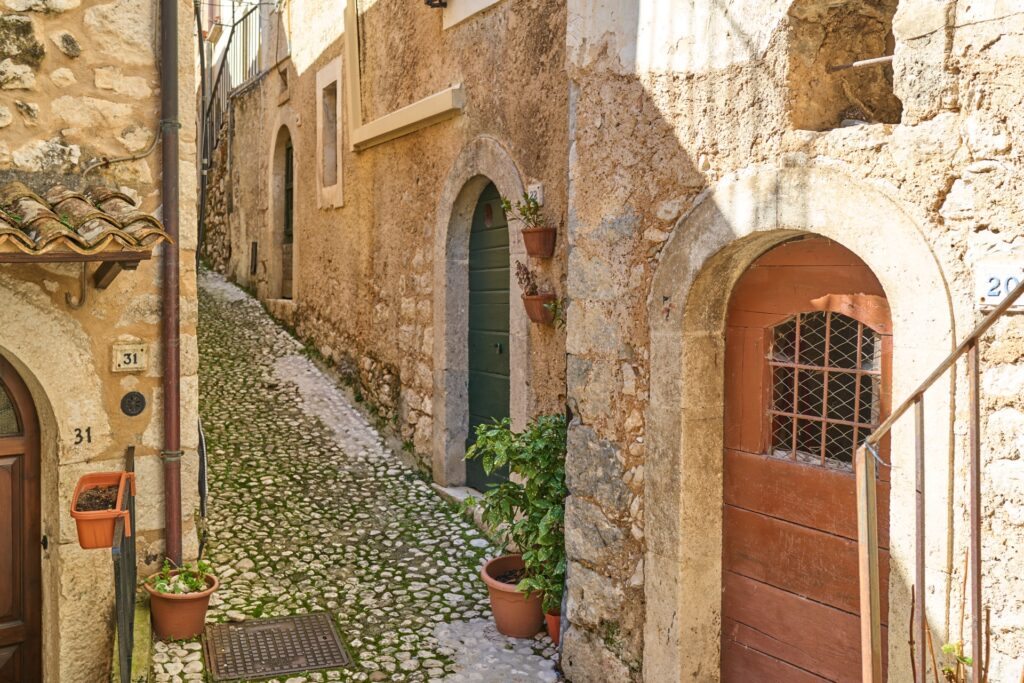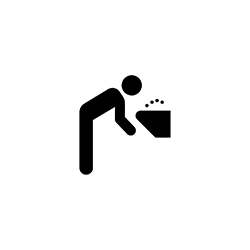Aircraft Shelters
Historical landmark
Via Pedicata is a street of medieval origin that connects the ancient village of San Donato to the Via Marsicana, the path leading to Forca d'Acero and Abruzzo. The characteristic feature of this steep and picturesque street are the rooms and cellars on the ground floor used by the civilian population as shelters during World War II.
In anticipation of the approach of the front, German soldiers had several shelters excavated in the mountains of the village. These shelters, made by Sandonese workers, can still be visited today. From November 5, 1943, to June 5, 1944, the village suffered several bombardments, shelling and air raids.
There was a great deal of damage, caused mainly by the Allies, which produced destruction and several deaths among the people of Sandon. The same situation occurred throughout the country: by the end of the war, civilian casualties numbered over seventy thousand.
San Donato under the bombs
On November 5, 1943, the series of Allied attacks on San Donato began with the air raid on Contrada Chiaie: air bombs seriously wounded two people, demolished one house and damaged others. In January 1944, the Allies initiated the First Battle for Cassino by attempting the breakthrough of the Gustav Line in the Comino Valley. Throughout the month, according to official reports, the town suffered shelling and air raids.
The Germans warned the population of the impending bombardment by operating a siren mounted on top of a truck positioned in Piazza Umberto I (today Piazza Libertà). The most important attacks by the Allied side occurred on March 9, March 18, April 21, May 12 and May 15, with a cannonade on the town center that damaged the Municipal House and caused significant damage to many buildings.
The retreating Germans hit San Donato with artillery from June 1 to 5. There was significant damage to housing, five dead and several seriously wounded civilians.
Regulation of air raid shelters
In 1933 the Ministry of War issued the first regulations for the construction of shelters and the protection of existing buildings. The following year, by Royal Decree of March 5, 1934, the Regulations for anti-aircraft protection of the national territory and civilian population were drafted.
On August 31, UNPA (Unione Nazionale Protezione Antiaerea) was established with the aim of promoting the construction of shelters for private individuals and the creation of volunteer anti-aircraft protection teams. The teams were born from the collaboration between the Fascist Party, the Fire Brigade and the Red Cross.
In 1936 two new decrees obligated the construction of air raid shelters in all new buildings.
From bunkers to caves
The city where the most important defensive works were built in anticipation of possible air attacks was Rome. In addition to makeshift shelters for the population, shelters capable of guaranteeing the safety of the state leadership were built. Twelve shelters and anti-aircraft bunkers are documented in the capital, almost all of them built on Mussolini's instructions.
Technically they were bomb-proof and featured technologically advanced engineering solutions. On Feb. 4, 1943, with the war in progress, the Ministry of the Interior ordered that natural caves, karst sites and caves also be repurposed into public shelters. The sounding of alerts came through siren whistles, bell tolls or cannon shots.
In anticipation of the approach of the front, German soldiers had several shelters excavated in the mountains of the village. These shelters, made by Sandonese workers, can still be visited today. From November 5, 1943, to June 5, 1944, the village suffered several bombardments, shelling and air raids.
There was a great deal of damage, caused mainly by the Allies, which produced destruction and several deaths among the people of Sandon. The same situation occurred throughout the country: by the end of the war, civilian casualties numbered over seventy thousand.
San Donato under the bombs
On November 5, 1943, the series of Allied attacks on San Donato began with the air raid on Contrada Chiaie: air bombs seriously wounded two people, demolished one house and damaged others. In January 1944, the Allies initiated the First Battle for Cassino by attempting the breakthrough of the Gustav Line in the Comino Valley. Throughout the month, according to official reports, the town suffered shelling and air raids.
The Germans warned the population of the impending bombardment by operating a siren mounted on top of a truck positioned in Piazza Umberto I (today Piazza Libertà). The most important attacks by the Allied side occurred on March 9, March 18, April 21, May 12 and May 15, with a cannonade on the town center that damaged the Municipal House and caused significant damage to many buildings.
The retreating Germans hit San Donato with artillery from June 1 to 5. There was significant damage to housing, five dead and several seriously wounded civilians.
Regulation of air raid shelters
In 1933 the Ministry of War issued the first regulations for the construction of shelters and the protection of existing buildings. The following year, by Royal Decree of March 5, 1934, the Regulations for anti-aircraft protection of the national territory and civilian population were drafted.
On August 31, UNPA (Unione Nazionale Protezione Antiaerea) was established with the aim of promoting the construction of shelters for private individuals and the creation of volunteer anti-aircraft protection teams. The teams were born from the collaboration between the Fascist Party, the Fire Brigade and the Red Cross.
In 1936 two new decrees obligated the construction of air raid shelters in all new buildings.
From bunkers to caves
The city where the most important defensive works were built in anticipation of possible air attacks was Rome. In addition to makeshift shelters for the population, shelters capable of guaranteeing the safety of the state leadership were built. Twelve shelters and anti-aircraft bunkers are documented in the capital, almost all of them built on Mussolini's instructions.
Technically they were bomb-proof and featured technologically advanced engineering solutions. On Feb. 4, 1943, with the war in progress, the Ministry of the Interior ordered that natural caves, karst sites and caves also be repurposed into public shelters. The sounding of alerts came through siren whistles, bell tolls or cannon shots.
Do you want to visit this attraction?
Book your vacation now.
Aircraft Shelters,
Via Pedicata,
46,
03046 San Donato Val di Comino FR,
Italy
-
Via Pedicata, 46, 03046 San Donato Val di Comino FR, Italy
Details
Suitable for
- Accessible to wheelchair users, Childrens, Couples, Families, Groups, Solo travelers
Best season to go
- All the seasons
Duration / time of visit
- Up to 1 hour
Type of tour
- This attraction is part of a guided tour, Small groups tour, Solo tour, Private tour, Virtual tour
Are audio guides provided?
- Yes, upon request
Available languages
- English, Italian
Ticket price
- Does not require a ticket






